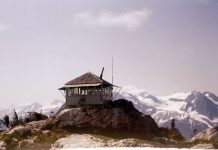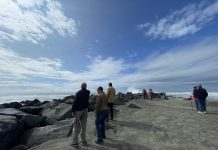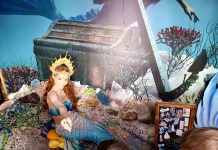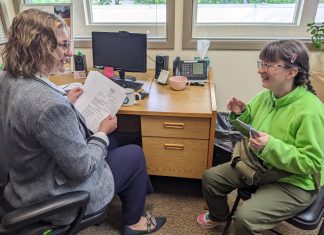Whatcom County beaches are a special place only truly understood by spending time on them — not by the pictures that populate when you search #beachlife on Instagram. White sandy beaches flanked by palm trees are reserved for more tropical climates. Our sand hides between layers of rock and shells or awaits receding water, revealing itself in a brown, sticky form. Rare are the days when the sun is hot enough and the tide out far enough for the sand to begin to dry. If a palm leaf is to be found, it will not be above providing shade on a hot sunny day, but below in the form of a fossil. And what a find that would be!
In Whatcom County, daydreams of lounging on a beach replace visions of laying out a towel on fluffy white sand with worming your body into the layer of small rocks and removing any large ones positioned uncomfortably in your back. In exchange for a soft pillow of sand, a large rock or a well-placed log is used for resting your head. While getting your free, unscheduled rock massage may not completely fill the lounging void, what’s under your body will provide an abundance of relaxation and intrigue.
Our beaches provide a different kind of relaxation as we explore the exciting and diverse world they provide. Every square inch of beach is teaming with life hiding amongst a field of geological marvels. These beaches were not designed for those who want to sit around. Instead, they invite adventure and exploration, providing the perfect landscape for beachcombing.
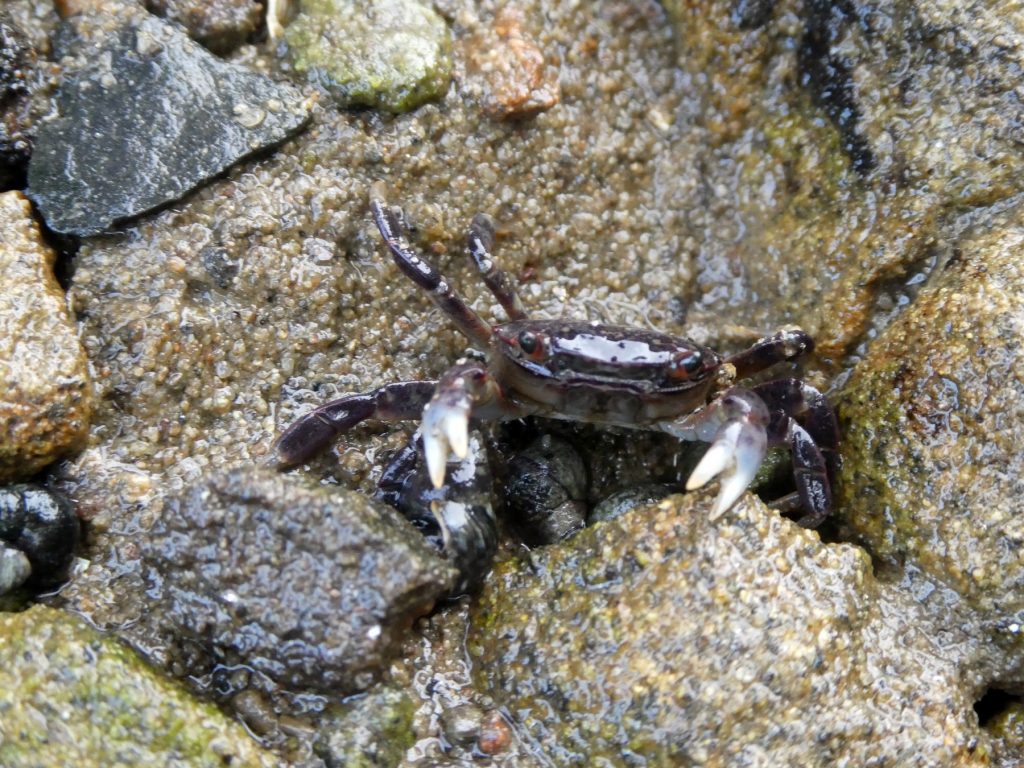
Our rock-strewn shores vary from millions of pebbles that crunch as you walk to softball-size rocks that are a surefire ankle workout. On other beaches, solid rock Earth dives into the water. With the right tides, the rocks can be left behind with sandy mudflats revealing a new adventure. The different beaches offer different combing opportunities.
The pebbled and smaller stone beaches are a rockhound’s paradise. The small-to-medium-sized rocks offer an abundance of variation over short distances. One can slowly walk the beach and wait for the perfect specimen to catch their eye or find a nice place to sit and sift through layers and layers within arm’s reach. This is the environment where sea glass is most easily found. While the clear and brown glass can be hard to spot, the greens and blues pop amongst the gray and brown stones. As your search continues, your mind will adapt, and soon you’ll spot the wide varieties of sea glass with ease.

In this same environment, finding agates that range from a deep orange to a clear pink can make you feel like you found a treasure. Jasper comes in green, red, and mottled and is an abundant stone in our area. Spotting quartz on our beaches is also common, often attached to another rock or rounded out on the beach. What is less common — and likely takes some extra combing — is finding it in crystal form.
Looking to observe sea life? The beaches with larger rocks and stone shelves are fantastic for this. Often a flipped-over rock will reveal an entire ecosystem filled with green or purple shore crabs, marine worms, various types of clams, and a variety of sea snails. You may also spot an oyster nestled amongst the rocks, waiting for the high tide.
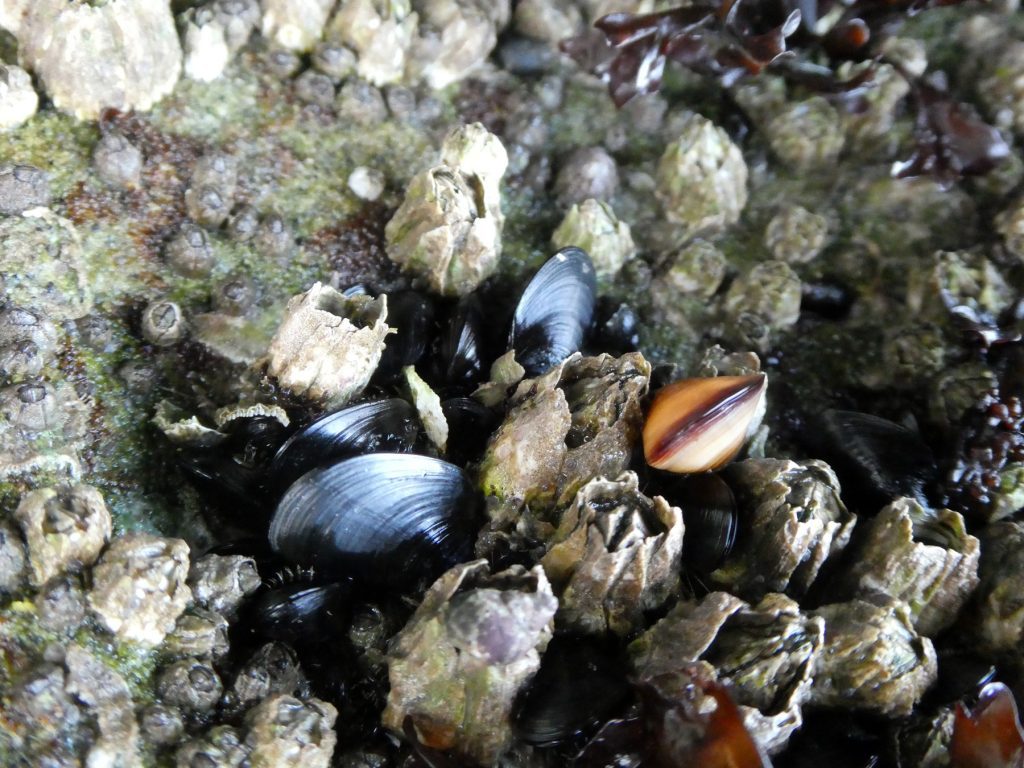
As the water recedes off the slabs, indentations turn into mini oceans. These tide pools are better viewing than any tv show, as a whole world goes about its business. Different species of hermit crabs often scurry amongst the stoic barnacles and waving seaweed. Mussels elegantly cluster together, having staked their claim on the rock. If you get lucky, you may spot fish swimming in the little pool. The underside of these giant slabs or large boulders is also where starfish like to hang out.
When our shores enlarge as the tide recedes, the wet sandy beaches lay out beds of seagrass and strewn-out bull kelp, giving a glimpse of the giant forests below the sea. Dungeness and rock crabs can be found hiding along the shores, and clams may squirt you as you walk by to let you know that they, too, are living below.

Whatcom County is home to a spectacular variety of public beaches, including Larrabee State Park, Marine Park, Locust Beach, and Birch Bay County Park. Pay attention to each location’s current permit requirements and access hours.
When heading to a Whatcom County beach, the needed gear can range from rubber boots to flip flops and raincoats to sunscreen. Some days you may need all of the above. I like throwing a couple of my favorite identification books in my backpack, including Common Seashore Creatures of the Pacific Northwest by J. Duane Sept and Washington and Oregon Rocks and Minerals by Dan R. Lynch and Bob Lynch.
As always, when recreating outdoors, leave it better than you found it, and be sensitive to the habitats you are entering. If harvesting anything is on your to-do list, make sure it is allowed, in season, safe, and you have any required permits.






